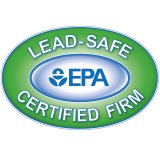Local Training and Outreach
On this page:
Introduction
In the fall of 2022, The U.S. Environmental Protection Agency (EPA) launched the second year of its training and outreach initiative focused on reducing childhood lead exposure in environmentally overburdened and underserved communities throughout the United States and its territories. Para ver la información en español sobre esta iniciativa, visite: https://espanol.epa.gov/plomo/capacitacion-y-alcance-publico-local.
The Enhancing Lead-Safe Work practices through Education and Outreach (ELSWPEO) initiative is designed to serve local communities by both encouraging renovation, repair and painting (RRP) firms and contractors working on pre-1978 homes to become lead-safe certified under EPA’s RRP rule and raise awareness among community leaders and the general public about lead exposure and the importance of hiring lead-safe certified contractors.
As of February 6, 2023, 512 contractors have been trained in lead-safe work practices, 187 additional participants increased their understanding of the RRP rule and 871 members of the general public have been educated using the Lead Awareness in Indian Country: Keeping our Children Healthy! Curriculum (Lead Awareness Curriculum).
EPA offered free RRP trainings and Lead Awareness Curriculum sessions in 11 different communities in 2022: Stratford, CT; Loíza, PR; Arecibo, PR; Newark, NJ; Portsmouth, VA; Miami, FL; Toledo, OH; Saint Louis, MO; Billings, MT; Pueblo, CO; and Sacramento, CA. These communities were selected because they reflect the diversity of the United States, have known lead exposure issues, and demonstrate a need for RRP-certified contractors.
RRP Training for Contractors

As a contractor, you play a critical role in helping to prevent lead exposure. Ordinary renovation and maintenance activities can create toxic lead dust that can harm your customers, children, workers, and even yourself. By following lead-safe work practices, you can prevent lead hazards and reduce childhood lead exposure.
In general, anyone who is paid to perform work that disturbs paint in housing and child-occupied facilities built before 1978 must be lead-safe certified by EPA or an EPA-authorized state or tribe. This includes all firms, even sole proprietorships. If you are a renovation firm or contractor, we recommend that you read more about EPA’s RRP Program to understand how to fulfill your legal requirements to protect yourself, your employees, and your clients from the dangers of lead exposure.
In Fall 2022, EPA offered free RRP training, in both English and Spanish depending on the local needs, for 230 contractors in communities across America.
Lead Awareness Curriculum Sessions

Along with the RRP trainings, EPA offered both in-person and virtual Lead Awareness Curriculum sessions for community leaders and the general public. EPA offered sessions on two topics: a "Lead Awareness Curriculum Train-the-Trainer" for community leaders and, a general "Understanding Lead" session for anyone interested in learning about lead.
Lead Awareness Curriculum Train-the-Trainer Sessions
In the Lead Awareness Curriculum Train-the-Trainer sessions, 147 community leaders learned how to educate their communities about lead, lead exposure and actions to reduce and prevent childhood lead exposure by using and modifying the Lead Awareness in Indian Country: Keeping our Children Healthy! Curriculum.
Watch a recording of the “Lead Awareness Curriculum Train-the-Trainer” 2021 webinar (in English) here. You can download a PDF of the Train-the-Trainer slides used in these sessions in English or Spanish.
Understanding Lead for Community Members

In the Understanding Lead sessions, 281 attendees learned about lead, its impacts, and simple actions to reduce and prevent potential lead exposure. The 90-minute sessions based on Module 1: Understanding Lead of the Lead Awareness Curriculum was designed to teach participants to:
- Recognize potential sources of lead exposure;
- Understand impacts and effects of lead exposure;
- Learn simple actions to reduce lead exposure; and
- Know the importance of testing children’s blood lead levels.
To learn more about lead, watch a recording (in English) of the "Understanding Lead" webinar here. You can download a PDF of the slides in English or Spanish.
